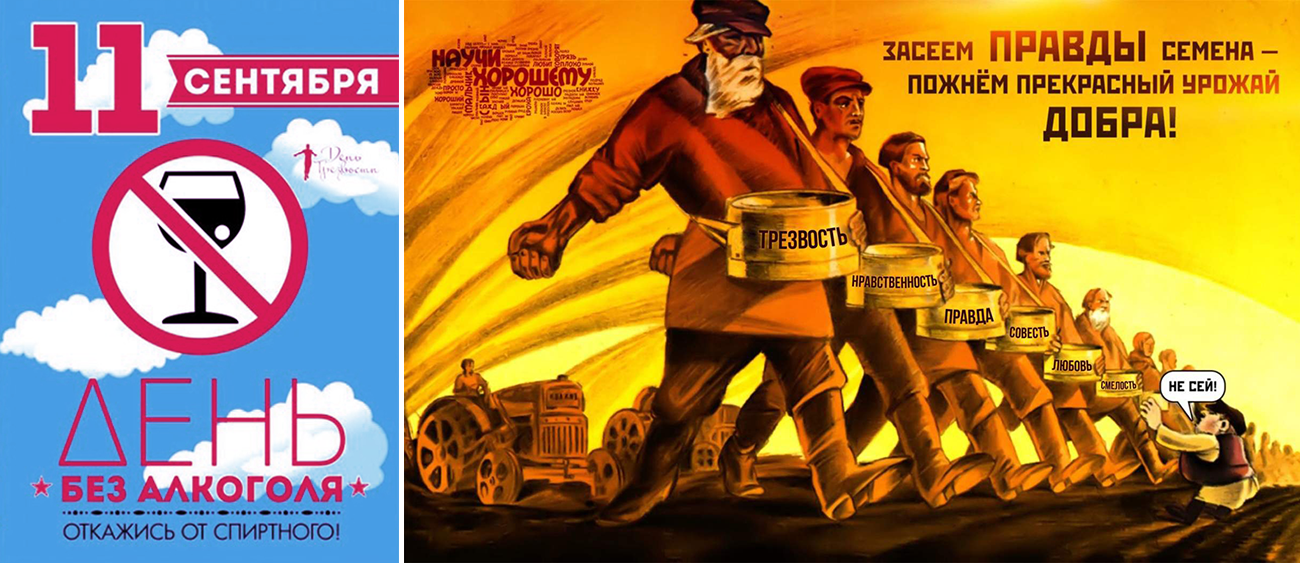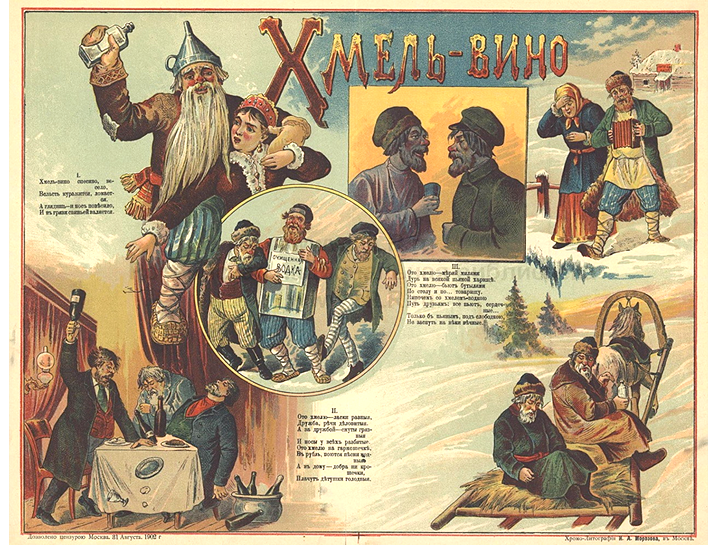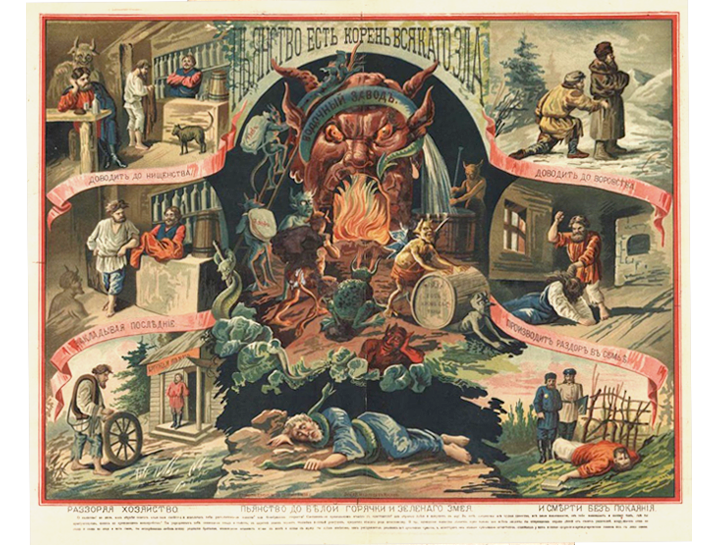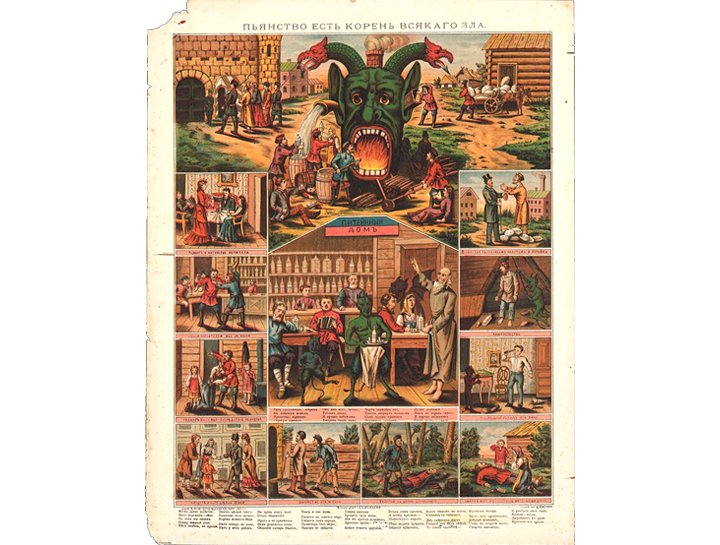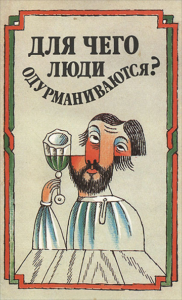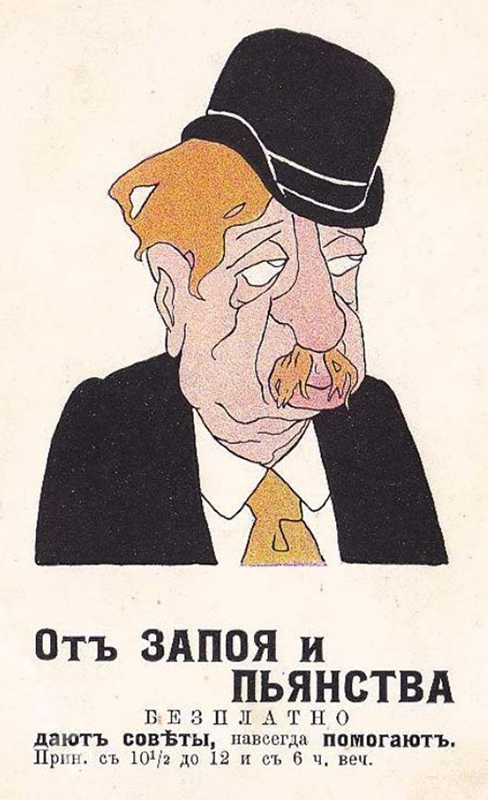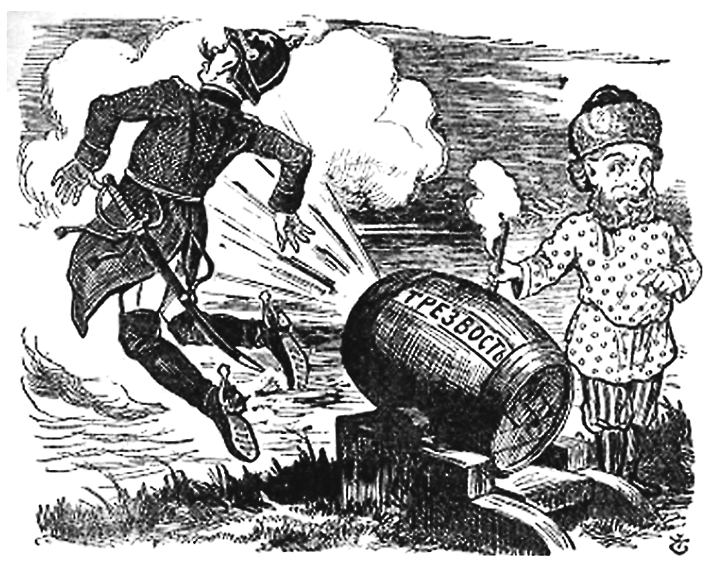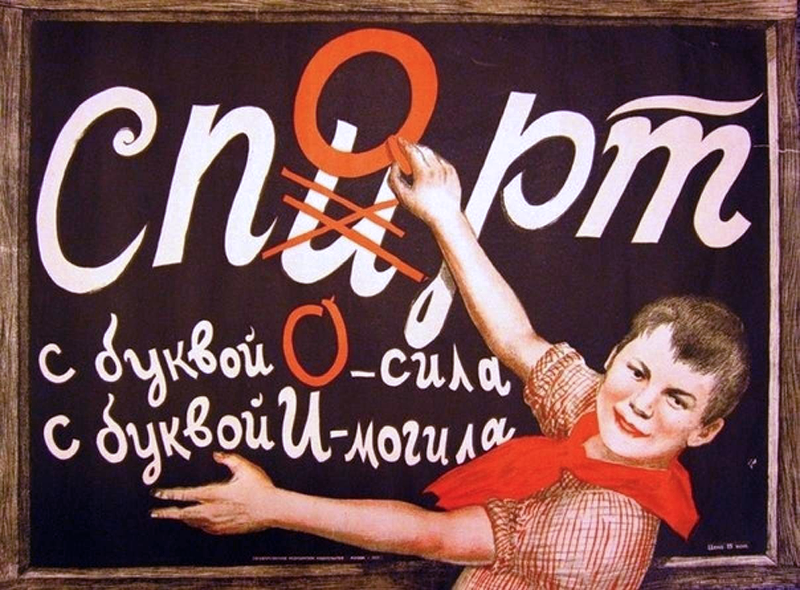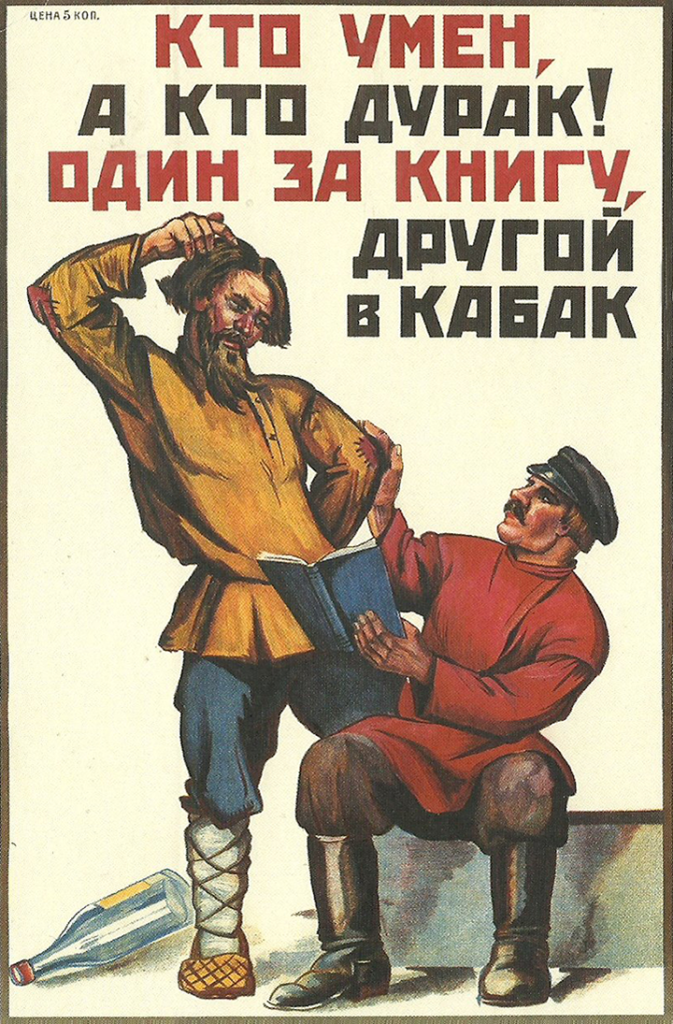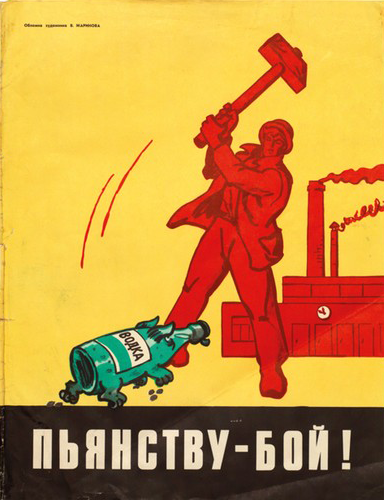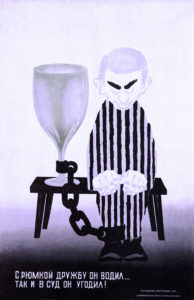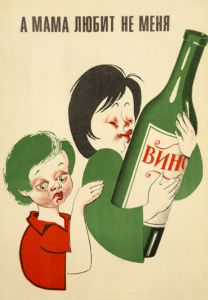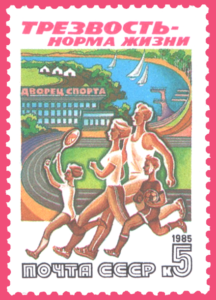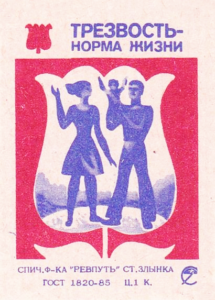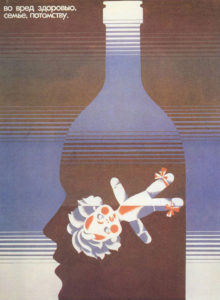Art Helps Fight Alcohol Addiction.
“Sober Art” tells the story of Russian national sentiment towards alcohol and the reason behind the new trend for sobriety and health.
Did you know that Russia has a long cultural tradition of alcohol abstinence and sobriety? Yes, it does. Here are a few facts from Russian history that can explain why in the last ten years consumption of alcohol in the country has fallen 40%, sobriety is a new social trend, hundreds of sober lifestyle organizations, villages, and whole cities have been formed and their numbers are growing.
After reading this article you will never see Russia the same way again.
“Drunken money” and the big question "How did vodka spread throughout Russia?"
In Russia, alcohol is often called “drunken money,” money generated by government or alcohol lobby, at the cost of health and social diseases of poverty and despair to the majority. The average Russian sees alcoholism as an economic battle with corporate greed, not a personal issue. The impact? Most Russians do not demonize alcohol and see alcoholism as a social disease, a weakness of a character and focus public effort on education and social action, on building the culture of sobriety at home, work, and community. Do they succeed?
According to the “Alcohol Policy Impact Case Study” published by the World Health Organization in 2019, – “Between 2003 and 2016, total per capita consumption decreased by 43 %, with a 40% decline in recorded consumption and a 48% decline in unrecorded consumption“. * (source: WHO Europ)
“That’s how vodka spread throughout Russia” is the title of this poster art created in 1917 by Russian revolutionary poet futurist Vladimir Mayakovsky and artist V. Lebedev. Text on the banner above the shop door on the right says, – “Government Liquor Store.” The group in front depicts a tzar, a gendarme, and a clerk.
September 11 - The National Day of Sobriety.
September 11 is a widely observed national day of sobriety in Russia. Its first celebration was held in 1911 in St. Petersburg, by the initiative of the Russian Orthodox Church and was reinstated in 2014. The sale of alcohol on this day is prohibited. Many cities celebrate this day with demonstrations and educational events waving banners and wearing “sober” teeshirts with catchy slogans: “Sobriety is the norm of life,” “Born sober – live sober,” “Russian means sober,” “Sobriety is freedom,” “Sobriety – choice of the strong.” The great number of activities on this day are orchestrated by the federal project “Sober Russia,” but most of them are initiated and organized by local governments and non-government organizations.
“September 11 – the day without alcohol” (left). “Sow the seeds of truth reap the good: Sobriety, ethics, truth…” (right).
The first anti-alcohol civic society in Russia. 1887.
History of the social movement.
In 1887, four decades before the formation of Alcoholics Anonymous in the US, the author of “Anna Karenina,” great Leo Tolstoy founded the first society of sobriety in Russia – “Consent against drunkenness.” This was the first in the world anti-alcohol civic society dedicated to collective sobriety and education. Members wowed an alcohol-free lifestyle and organized sober education in the community. Amid the first members were luminaries of Russian science and art. 744 men and women joined the party in a few short months of organization, many more came next.
In the following years, the number of spontaneously forming sobriety societies in the country exploded. By 1911 there were almost 2,000 sobriety organizations across Russia which led to the organization of the National Day of Sobriety that year.
Anti-alcohol poster art. 1902.
The Writer’s Opinion. 1889.
What convinced Leo Tolstoy to start a sobriety organization? In 1889 in the article titled “The Holiday of Learning, January 12.” Tolstoy wrote:
Non-abstinence from vine is most dangerous because it kills conscience.
Later in 1890 in the essay “Why Do Men Stupefy Themselves?” he shared his opinion on causes for the use of addictive substances. He wrote that the use of drugs can be best understood as a means to satisfy
the need to quiet the voice of conscience in order not to be aware of the discord existing between one’s way of life and the demands of one’s conscience.
Leo Tolstoy saw addiction as a mirror of spiritual dissatisfaction with on’s life. He concluded with the observation of hopeful trends in the life of the country, –
The freedom from this awful evil will bring a new epoch in the life of humankind and this epoch seems to have already started. Evil has been understood.
Leo Tolstoy’s optimism and faith in education are widely shared by official and independent culture today.
Anti Alcohol Lobby Rebellions. The roots of discontent.
1648 “Pub riots.”
First recorded anti-alcohol riots in Russia. The following all Land Cathedral of 1652 significantly reduced production and sales of alcohol in the country.
1856 -1860 Sobriety Revolts.
Large scale spontaneous anti-alcohol movement arose against financial abuses and forced alcoholization of villagers by local pub heads. 32 provinces and more than 2000 hamlets participated. Riots were crushed by the government. 11 thousand peasants were sent to prison and 800 exiled to Siberia.
Sobriety movements.
1874 — 1914.
Since the end of the 19th century, with the active support of the state, a large number of ecclesiastical and secular sobriety operated in Russia, the largest of them was the All-Russian Alexander Nevsky Brotherhood of Sobriety. Established in 1898, by 1917 it grew to 140 thousand sober members.
Hundreds of sober magazines and small publications were issued every month across Russia. “Sobriety Bulletin,” in St. Petersburg, “Sober Life,” “Fight for sobriety,” in Moscow, “Sober Monday” in Pskov are names of a few.
1914—1917—1925. Inhibition Law.
A complete ban on the sale of any alcohol was signed by Nicholas II prior to entering World War I. Crime rates and deaths from alcohol poisoning in the country has declined dramatically.
After the revolution of 1917, the Soviet government extended the ban on trade of all forms of alcohol.
Government-Led Anti-Alcohol Campaigns After Revolution.
1929 Campaign.
In 1929 two state decrees “On measures to restrict the sale of alcoholic beverages” and “On measures to combat alcoholism” and the new federal laws forbade the opening of new wine shops in cities and working villages, the sales of alcohol in pre-holiday, holidays and weekends, as well as on paydays. Hundreds of mass anti-alcohol demonstrations took place in the country supporting the campaign.
The same year State Publishing House issued a lottery with the slogan “Book instead of vodka!” and new sober lifestyle magazine “Sobriety and Culture” was launched.
1958 Campaign.
During World War II Soviet government priorities shifted towards managing heavy military industry, production of alcohol was minimal, consumption of alcohol by civilians was negligent. Yet, according to some sources, the army was supplied with a regular regiment of spirt and a large number of soldiers developed drinking habit. When the war ended soldiers brought this habit home. After the war alcohol production in the country increased many folds to fill the fiscal needs of the economy, addiction to alcohol was rampant and the necessity to regulate alcohol consumption by the government has returned.
The state provision of 1958 banned the sale of vodka in all catering trade enterprises, except restaurants, located near public transportation facilities, in the immediate vicinity of industrial enterprises, educational institutions, childcare facilities, hospitals, sanatoriums, in places of mass festivities and recreation.
1972 Campaign.
Anti-alcohol campaign of 1972 went by the motto “Fight Drunkenness!” (“Пьянству — бой!”).
It was aimed at the moderation of consumption of alcohol. Hard liquor production was replaced with the production of wine and beer. The government opened thousands of rehabilitation facilities. Chronic alcoholics were sent to mandatory medical treatments.
1985-1990
“Sobriety – Norm of Life” is a political slogan of the next anti-alcohol campaign in the USSR that took place in 1985.
It was the last and largest soviet government campaign to reduce the consumption of alcohol in the country. Production and sales of alcohol were cut down, anti-alcohol education tripled, medical treatment of alcohol addiction became widely available. Anti-alcohol poster art was part of everyday culture and on the view almost everywhere in newspapers, magazines, radio, and TV.
The last wave of change. Summer of 2019.
Today, as Russia successfully transitioned to the open market economic system, more and more people turn to the new concept of self as a labor capital. In the light of this new idea, in the midst of the fourth industrial revolution and the slowly rolling in the information age, the human mind for most of us is undoubtedly the main asset of wealth creation. To be drunk or not to be drunk for many Russians today means – to have or not to have money, wealth and future for their families. Sobriety is a must if you want to survive and live well.
Does it seem that Russians today could be sharing J.F. Kennedy sentiment when he said, – “The human mind is our fundamental resource?”Maybe. What do you think?
Maria V Shall
Maria is a producer and executive editor of the Art of Russia international art magazine.



